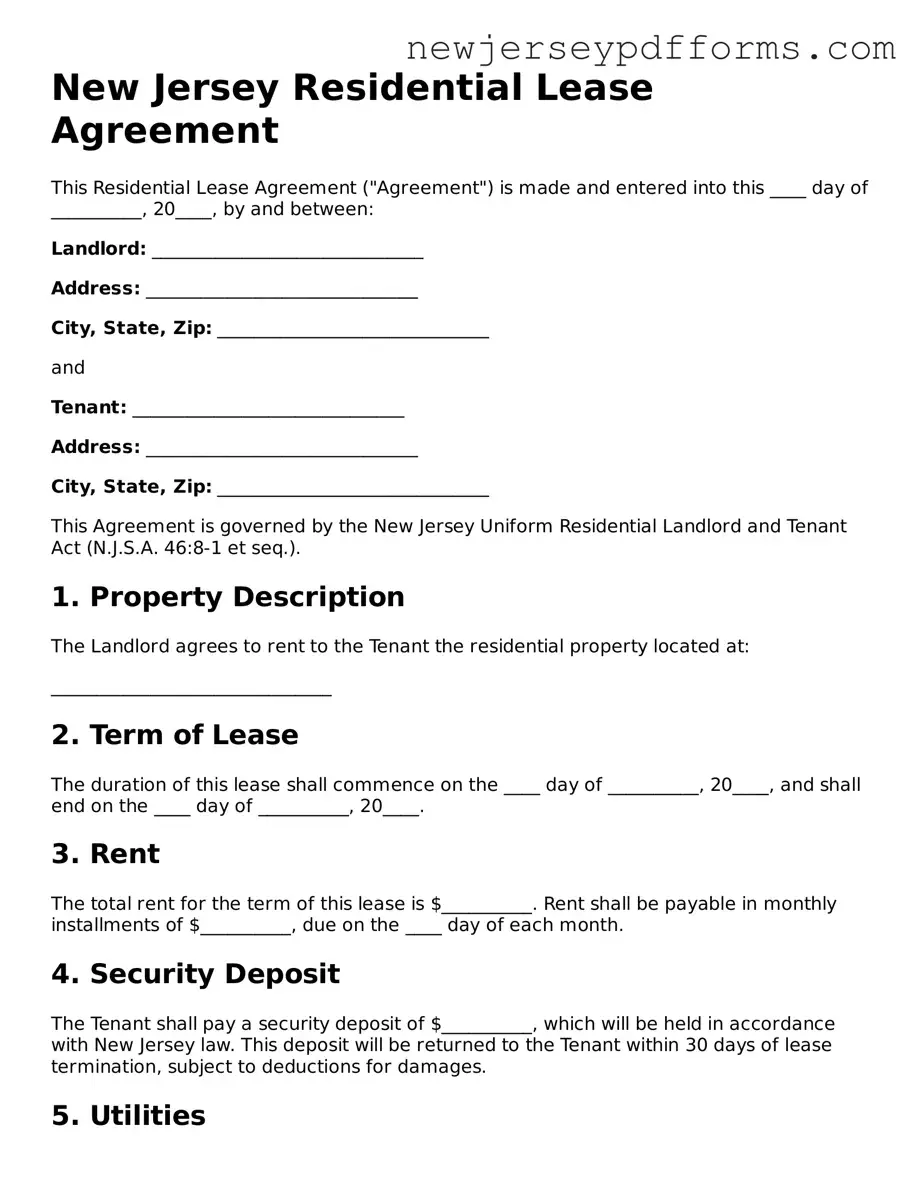The New Jersey Residential Lease Agreement is similar to the Commercial Lease Agreement. While the former is designed for residential properties, the latter is tailored for commercial spaces. Both documents outline the terms of the lease, including the duration, rental amount, and responsibilities of both parties. They serve to protect the rights of landlords and tenants, ensuring that both parties understand their obligations under the lease.
Another document akin to the Residential Lease Agreement is the Month-to-Month Rental Agreement. This type of agreement offers flexibility, allowing tenants to occupy a property on a month-to-month basis rather than a fixed term. Both agreements detail rental payments, maintenance responsibilities, and termination procedures, but the Month-to-Month Rental Agreement typically requires shorter notice periods for termination.
The Sublease Agreement also shares similarities with the Residential Lease Agreement. In a sublease, a tenant rents out their leased property to another person, while still remaining responsible to the original landlord. Both agreements must clearly outline the terms of occupancy, payment obligations, and responsibilities for property maintenance, ensuring all parties are aware of their rights and duties.
The Lease Option Agreement is another related document. This agreement grants a tenant the option to purchase the property at a later date, in addition to the standard leasing terms. Both documents establish rental terms, but the Lease Option Agreement includes specific provisions regarding the purchase price and conditions under which the tenant can exercise their option to buy.
The Rent-to-Own Agreement resembles the Residential Lease Agreement as well. This type of contract allows tenants to rent a property with the intention of buying it after a specified period. Both agreements cover rental payments and property maintenance, but the Rent-to-Own Agreement includes clauses that specify how a portion of the rent may contribute to the purchase price.
The Roommate Agreement is similar in that it outlines the living arrangements and responsibilities among multiple tenants sharing a rental property. While the Residential Lease Agreement is between the landlord and a tenant, the Roommate Agreement focuses on the relationships and obligations between roommates, detailing aspects such as rent division, utility payments, and house rules.
The Lease Purchase Agreement also bears resemblance to the Residential Lease Agreement. This document combines elements of leasing and purchasing, allowing tenants to rent a property with the intent to buy it. Both agreements include terms for rental payments and property maintenance, but the Lease Purchase Agreement specifies the conditions under which the tenant can buy the property.
For those navigating the complexities of rental agreements, including the intricacies of the Residential Lease Agreement and its variants, understanding associated documentation is vital. Resources like the PDF Document Service provide helpful templates that can aid in the preparation and comprehension of necessary forms, ensuring that all parties are well-informed and equipped for their respective responsibilities.
The Commercial Sublease Agreement is another document that parallels the Residential Lease Agreement. This agreement allows a tenant of a commercial property to lease the space to another business. Both agreements must clearly define the terms of occupancy, payment obligations, and the rights of each party, ensuring that the original landlord's interests are protected.
Finally, the Agricultural Lease Agreement is similar in that it governs the leasing of agricultural land. While the Residential Lease Agreement is for residential properties, both documents establish terms for use, payment, and maintenance. They ensure that the rights and responsibilities of both landlords and tenants are clearly defined, catering to the specific needs of agricultural operations.
